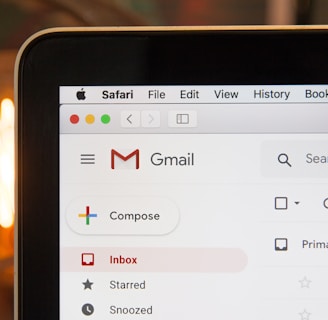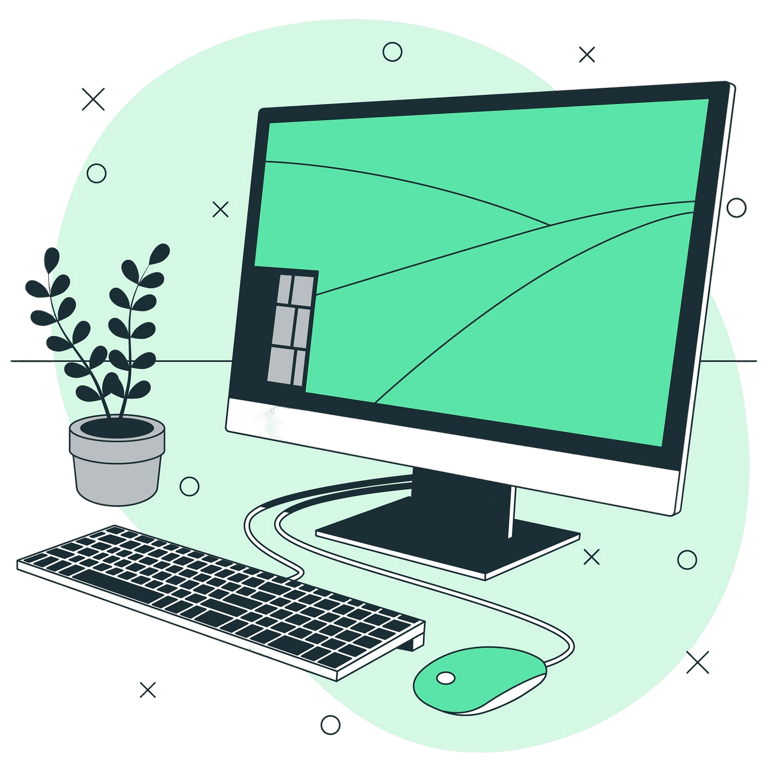How To Make Your First B2B Email Campaign Actually Work (Without Sounding Spammy)
Struggling to get responses from your B2B email campaigns? Learn how to craft emails that get opened, read, and replied to with smart segmentation, real personalization, and a clear strategy. Avoid common pitfalls and master the difference between outbound emails and opt-in newsletters.
Mike Parsons
3/5/20255 min read


Nobody wakes up thinking, “I hope I get more marketing emails today!” Yet, somehow, great B2B emails get opened, read, and even responded to.
So, how do you ensure your emails aren’t in the spam graveyard or, worse, the dreaded "Mark as Read Without Opening" zone?
Whether you’re crafting your first outbound campaign or setting up an opt-in newsletter, this guide will help you master email segmentation and personalization and avoid common pitfalls.
Let’s dive in.
1. Segmentation: Stop Sending Emails to Everyone
Sending the same email to everyone is like trying to sell winter coats in the desert and swimsuits in a snowstorm. Your email will get ignored if you don’t tailor your message to the right audience. That’s where segmentation comes in.
Segmentation helps you send targeted, relevant emails that resonate with your audience. Instead of blasting everyone with the same message, break your list down into groups based on:
Industry & Company Size: A startup and a large enterprise have different needs.
Job Title & Seniority: CEOs think differently than marketing managers.
Behavior & Engagement: Have they visited your site? Downloaded a resource? Attended an event?
Pain Points: What specific challenges does this segment face?
The more refined your segmentation, the more likely your email is to feel personal and valuable.
2. Personalization: Because "Hi {First Name}" Isn't Enough
If your idea of email personalization stops at inserting someone’s name in the subject line, you’re missing the point. People respond to emails that feel like they were written just for them.
Real personalization means going beyond the basics. You should:
Reference their company’s recent achievements or industry trends.
Mention a challenge they likely face based on their role.
Use subject lines that are specific, relevant, and engaging.
For example, instead of saying, “We help businesses like yours scale!” say, “I saw your company recently expand into Europe. Scaling globally can be tough. Here’s how we help companies navigate that challenge.”
This level of personalization shows you’ve done your homework and increases the likelihood of a response.
3. Writing Emails People Want to Read
Most business emails sound like robots wrote them. That’s a problem. If your email is boring, long-winded, or overly formal, it’s going straight to the trash.
Your email should be short, clear, and conversational. Stick to this structure:
A strong opening: Hook them in with a compelling stat, question, or observation.
A clear value proposition: Explain how you solve a specific problem in one or two sentences.
A single, clear CTA: Tell them exactly what to do next. (No vague “Let me know if this interests you” nonsense.)
Here’s an example of a good B2B email:
Subject: Quick fix for [Company Name]’s email engagement
Hey [First Name],
I noticed [Company Name] is doing amazing things in [Industry], and I wanted to get an industry quick insight.
Most B2B teams struggle with email engagement because they [common problem]. We’ve helped companies like [Similar Brand] increase replies by 3x with [quick solution].
Would it be possible to set up a quick 10-minute chat next Tuesday? No sales pitch, just sharing insights that might help.
Best,
[Your Name]
This email works because it’s personal, gets straight to the point, and makes it easy to respond
4. The Most Common Email Pitfalls (And How to Dodge Them)
Even well-intentioned email campaigns can go off the rails if you fall into common traps. Here are some of the biggest mistakes people make and how to avoid them.
Mass-blast everyone on your list – It will be ignored if your email feels generic.
Too many CTAs – One email should have one clear goal. Asking for a meeting, a reply, and a download is confusing.
Ignoring mobile optimization – Over half of B2B emails are read on mobile. You're losing engagement if your email isn’t easy to read on a phone.
Long-winded paragraphs – No one has time to read an essay. Break it up with spacing and bullet points.
The more you respect your reader’s time, the better your chances of getting a response.
5. A/B Testing: Because Your Gut Feeling Isn’t Data
What works for one audience might not work for another. That’s why testing is essential. If you’re not A/B testing your emails, you’re flying blind.
Experiment with different:
Subject lines – Try one with a question and another with a bold statement.
Email lengths – See if short and snappy works better than slightly longer and detailed.
CTA placements – Test whether putting your call to action in the middle or at the end makes a difference.
Sending times – Morning versus afternoon can impact open rates.
Start with small tests, analyze the results, and refine your approach based on data.
6. Follow-Ups: Because One Email Isn’t Enough
Most people won’t reply to your first email. That doesn’t mean they aren’t interested—it just means they’re busy.
Follow-ups are where most deals get made. Space them out strategically:
Follow-up 1 (2-3 days later): “Hey [First Name], just checking if you saw this—curious to hear your thoughts.”
Follow-up 2 (one week later): Share a case study or insight related to their industry.
Follow-up 3 (finIndustry): “I’ll assume this isn’t a priority right now—happy to reconnect in the future.”
The key is to be persistent without being pushy.
7. Outbound Emails vs. Opt-In Newsletters: Know the Difference
Many businesses confuse outbound cold emails with opt-in newsletters. While they both involve email, they serve very different purposes.
Outbound Emails (Cold Emailing)
Goal: Start conversations with potential clients.
Audience: Cold prospects (people who haven’t opted in).
Style: Short, direct, and highly personalized.
CTA: Get a reply or book a call.
Challenges: Must follow email laws like GDPR and CAN-SPAM.
Opt-In Monthly Newsletters
Goal: Nurture leads and provide value over time.
Audience: People who have signed up voluntarily.
Style: Informative, engaging, and longer-form.
CTA: Read an article, download a report, or engage with content.
Advantages: Higher engagement and no compliance concerns.
The best strategy is to use outbound emails to attract new prospects and then transition them into an opt-in newsletter to build a long-term relationship/


Final Checklist for a Killer B2B Email Campaign
Segment your audience correctly.
Go beyond “Hi {First Name}” in personalization.
Keep it short, punchy, and valuable.
A/B test your subject lines and CTAs.
Follow up (politely) if there’s no reply.
Understand the difference between outbound emails and newsletters.
Track results and optimize for what works.
Now, Your Turn
Got your first B2B email campaign in the works? What’s your biggest challenge? Drop it in the comments, or let’s chat.
If you need help crafting your outbound or newsletter strategy, I’d be happy to review it. Let’s make your emails impossible to ignore.
The Future of Marketing Moves at the Speed
The old way? Hire a slow, expensive agency.
The new way? Obtain a battle-ready marketing strategy in just 48 hours. Your next big breakthrough starts now.
Tailored strategies for efficient B2B marketing success.
Contact
Updates
© 2025. All rights reserved.

GrowthBooks by Apollo Advisors
ABN 34 346 108 139
Floor 11, 68 Alfred Street,
Milsons Point, NSW, 2061.
Australia


